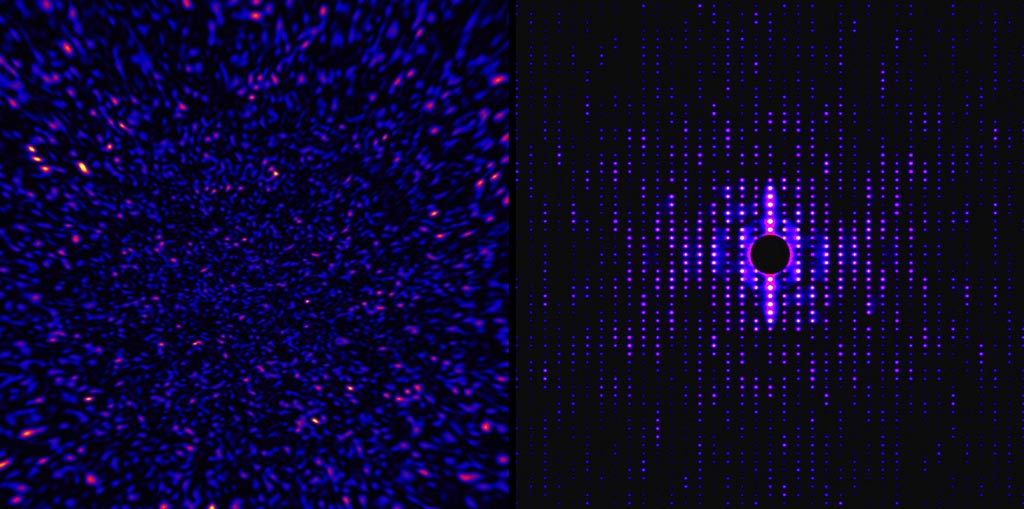Novel X-ray Imaging Offers Enhanced Resolution
By MedImaging International staff writers
Posted on 01 Sep 2017
A new study proposes that incoherent diffractive imaging (IDI) could significantly improve the quality of X-ray images in comparison to conventional methods.Posted on 01 Sep 2017
Developed by researchers at Friedrich Alexander University (FAU; Erlangen-Nuremberg, Germany), Deutsches Elektronen-Synchrotron (DESY; Hamburg, Germany) and the University of Hamburg (Germany), IDI measures intensity correlations of incoherently scattered x-ray radiation in order to image the full three dimensional (3D) arrangement of the scattering atoms. The incoherently scattered X-ray photons are in time-resolved “snapshots” with durations of no more than a few femtoseconds, a few quadrillionths of a second.

Image: Incoherent diffraction pattern (L), and after IDI intensity correlation (R) (Photo courtesy of Kartik Ayyer / DESY).
When analyzing the extremely short X-ray snapshots, information on the arrangement of the atoms can be obtained, but such short time spans have only been possible so far by using free-electron lasers. By taking advantage of DID with such lasers, significantly higher resolutions than those available with conventional coherent diffraction imaging and crystallography are possible, including supplementary 3D information in the Fourier space during single sample orientation.
The new method uses fluorescence light, which provides a much stronger signal that is also scattered to significantly larger angles, allowing more detailed spatial information. In addition, filters can be used to measure the light of specific atomic species, making it possible to determine the position of individual atoms in molecules and proteins, with a significantly higher resolution compared to coherent imaging using X-ray light of the same wavelength. The study was published on July 31, 2017, in Physical Review Letters.
“With X-ray light, in most cases incoherent scattering dominates, for example in the form of fluorescence resulting from photon absorption and subsequent emission,” said lead author Anton Classen, PhD, of the FAU Quantum Optics and Quantum Information group. “This creates a diffuse background that cannot be used for coherent imaging, and reduces the reproduction fidelity of coherent methods.”
An analogy of coherently scattered light waves would be water waves generated by obstacles in a slowly flowing stream, which generate a characteristic diffraction pattern formed by the underlying structure that can be derived by determining the phase relationship between incident and reflected photons. Under the water analogy, this corresponds to water waves that are deflected from the obstacles without vortexes or turbulences. But if photon scattering is incoherent, the fixed phase relationship makes it impossible to determine the arrangement of the atoms, as in turbulent waters.
Related Links:
Friedrich Alexander University
Deutsches Elektronen-Synchrotron
University of Hamburg













